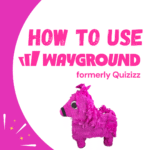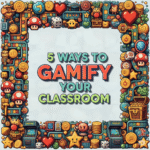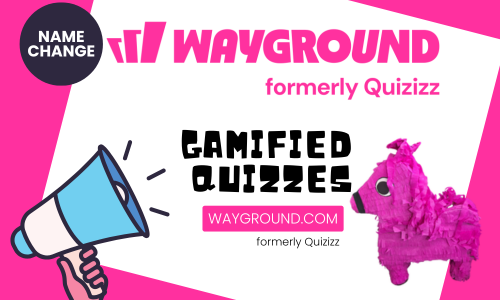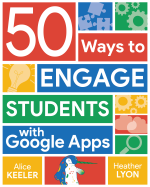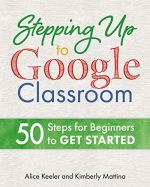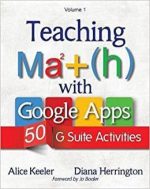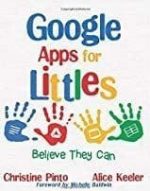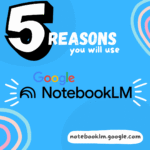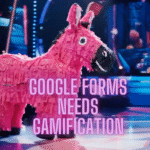Let me start by saying this: I love Google Forms. I use it all the time. For parent surveys, for collecting student information, and for detailed, open-ended assignments, it is a versatile and powerful workhorse in my teaching toolkit. It is free, easy to use, and the way it connects to Google Sheets for data analysis is a dream. However, when it comes to one of its most common uses, creating quizzes, I have to be honest. It falls flat.
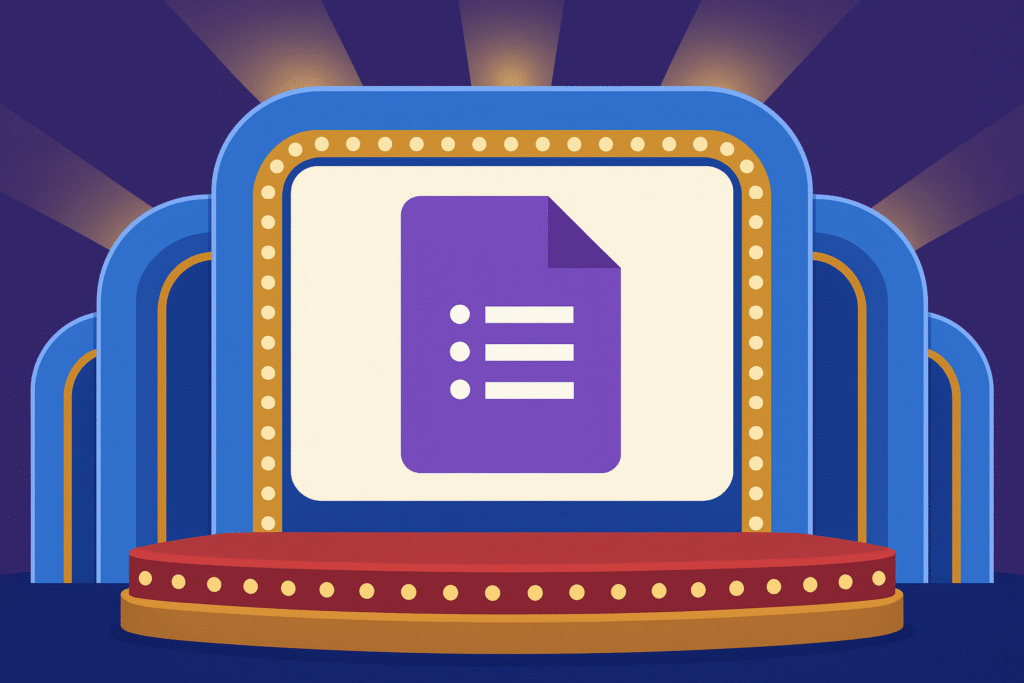
Google Forms was not originally designed as a quizzing platform. It slaps in features that, frankly, require a lot of clicks and lack the gamification found in other platforms.
Gamification Matters
Google Forms is a fantastic data collection utility, but as a quiz tool, it lacks a soul. It is functional, but it is not fun. It can assess knowledge, but it does little to inspire engagement. Students often experience a static, utilitarian list of questions that feels more like filling out paperwork than an exciting check for understanding. That is where it misses a huge opportunity.
A Google Form quiz, by its very nature, is a one-way street until the very end. Students answer questions in a vacuum and often do not get feedback until much later, after the teacher has manually reviewed the submissions. While there are some ways to hack this experience it is time consuming and easy to forget some of the steps.
This detached, asynchronous feedback loop is a missed pedagogical moment. The experience lacks the energy, immediacy, and motivation that we know drives student participation. It lacks the key ingredient that can transform a mundane review into a memorable learning event: gamification.
What is Gamification, Really?
Before we go further, we need to define what we mean by “gamification.” It is a term that gets thrown around a lot, and it is often misunderstood. Gamification is not about playing full-scale video games in class. That is game-based learning, like using Civilization to teach history (Sylvester, 2024). Gamification is the strategic use of game design elements and principles in non-game contexts (Kapp, 2012). It is about subtly weaving mechanics like points, badges, leaderboards, challenges, and narratives into the existing curriculum to boost motivation and engagement (Dichev & Dicheva, 2017).
True gamification is a holistic design process grounded in motivational psychology. The most successful gamified experiences tap into established theories like Self-Determination Theory (SDT), which argues that humans are intrinsically motivated when their needs for autonomy, competence, and relatedness are met (Parra-González et al., 2022).
- Autonomy is the need for choice and control.
- Competence is the need to feel capable and successful.
- Relatedness is the need to connect with others.
When a learning activity supports these three needs, it fosters intrinsic motivation, the holy grail of education. It creates a desire to learn for the sake of learning, not just for a grade. This is what well-designed gamification aims to achieve.
The Research Backs It Up
This is not just theory. A massive body of research confirms that gamification works. Multiple meta-analyses, which synthesize the results of many individual studies, show that gamification has a significant, positive impact on student outcomes. One major meta-analysis found a large overall effect size in favor of gamification (Bai et al., 2022). Another reported a medium effect on motivation and a large effect on academic performance (Parra-González et al., 2022). Renowned education researcher John Hattie, famous for his synthesis of what works in schools, calculated an effect size for gaming that places it firmly in the zone of desirable interventions that positively influence student achievement (Huang et al., 2024).
Gamification Can Improve Learning
The positive effects are seen across the board. Students in gamified courses report feeling more motivated, engaged, and focused (Alsawaier, 2021; Sylvester, 2024). This increased engagement translates into real academic gains. One study found that challenge-based gamification led to an 89% improvement in student performance compared to traditional lectures. Another found the results indicate a positive correlation between the implementation of gamification and increased student motivation, ultimately translating into improved pass rates). When designed well, gamification is a powerful tool for learning.
While the research is nice, I don’t need it to tell me that gamification matters. I’ve never had a kid running to class to fill out a Google Form, yet even my reluctant students are excited about a Wayground (formerly Quizizz.)
Google Forms is Great... But Not Gamified
As I said, I use Google Forms. It is an excellent assessment utility. Its strengths lie in its versatility for deep, diagnostic assessment. It supports a wide array of question types, including complex, open-ended formats like short-answer and paragraph responses. It even allows students to upload files, which is invaluable for assignments where they need to show their work (Teaching with Aris).
The data analysis is its superpower. All responses can be instantly exported to Google Sheets, allowing for powerful, in-depth analysis. I can track progress over time, sort data to identify trends, and group students for targeted instruction. For a pre-unit diagnostic or a summative assessment with detailed, qualitative data, Google Forms is the superior tool.
But notice what is missing. There are no innate gamification elements. The user experience is functional, not playful. The feedback loop is almost always asynchronous. It is a tool built to collect and analyze data, not to motivate and engage students in the moment.
Wayground (formerly Quizizz)
Wayground has been my goto for so long that I can’t remember not using it. While Google Forms was built as a survey tool adapted for quizzes, Wayground (Quizizz) was built from the ground up to be a fun, gamified engagement platform (Toda et al., 2023). It understands that how you assess is just as important as what you assess. It is designed to hit all the right notes of motivational psychology.
Note: if you’re wondering about the name change, watch the end of my 30 second video. Did you not every single time have to spell out the Z’s?
Why Wayground (formerly Quizizz)
Here is why a purpose-built, gamified tool like Wayground is my go-to choice for quizzes:
It’s Genuinely Fun and Engaging.
The moment you start a Wayground (Quizizz) session, the difference is palpable. It is a vibrant, game-like experience with avatars, themes, and music. Students earn points for correct answers and speed, watch their names climb a live leaderboard, and earn “power-ups” to use during the game. Instead of a dry form, it is an exciting competition that students are eager to join. Studies on Wayground consistently show that students feel happy, interested, and more confident when using it (CJLT, 2023).
The Feedback Loop is Instant and Powerful.
This is perhaps the most critical difference for formative assessment. In Wayground, students get immediate feedback after every single question. (I only endorse this for low critical thinking questions.) They know right away if they were correct or incorrect. This immediate feedback is crucial for learning, as it helps students adjust their strategies in real-time (RSIS International, 2024). Even better is the “Redemption Question” feature, which gives students a chance to re-attempt a question they got wrong. This closes the learning loop in the moment, reinforcing the correct concept when it matters most.
Retake is a Big Deal
A traditional test can be a high-pressure situation. Wayground masterfully lowers the stakes. With it’s question bank feature, something Google Forms lacks, the consequence of a low score can be to simply take it again.
This transforms the assignment from “get to the bottom of the page” to “show you’ve learned something.” A significant difference.
Gamification Elements
The playful memes, the self-paced format where students see questions on their own devices, and the overall game-like atmosphere make assessment feel less like a test and more like a game. The platform actively works to create a positive, low-pressure environment that motivates students to participate and persist.
Note that I usually will turn off the timer and other elements for my students who, like my own kids, have anxiety or don’t do well when timed.
It Fosters Autonomy, Competence, and Relatedness.
Thinking back to Self-Determination Theory, Quizizz hits all three psychological needs. Students have autonomy in the self-paced format and through customizing their avatars. They build competence through achievable challenges, immediate feedback, and seeing their progress on the leaderboard. They experience relatedness through the friendly competition and team-based modes. It is a system designed not just to test knowledge, but to build motivation from the ground up.
Accomodations Features
Google Forms remains a platform that everyone has the same experience, yet not every student approaches learning the same way. As I mentioned earlier, some students thrive with a timer, others find it anxiety producing.
“When assigning any Wayground [Quizizz] activity, educators select certain students on the roster to assign specific IEP/504 accommodations. In just a few clicks, the entire class can enjoy a personalized and compliant learning experience, all within the same lesson.”
Google Forms Lacks ALL of the Accommodation Features of Wayground
In addition to the gamification, which matters, on accommodations alone Wayground is the clear winner.
Educator AI Assistant
Collects NO User Data
Use AI to create lesson plans, rubrics, newsletters, anything you want.
Educator AI Assistant is different by collecting ZERO data. Shows you the prompt and allows you to edit and share.
Runs locally in your own Google Sheets™.
Fully transparent and customizable.
Created by AliceKeeler
The Right Tool for the Task
As I mentioned, I love Google Forms. I use them a LOT. I’ll even use it sometimes for some quick formative assessment. However, let’s choose the right tool for the job. Wayground has better quizzing features, accommodation features, and gamification that makes it the clear choice.
Google Forms is a powerful utility, but it needs the spark of gamification to truly shine as a quiz tool. It is an excellent tool for gathering data, but it is not designed to create an experience. For that, we need platforms that were built with engagement at their core. For that I use Wayground to bring that essential energy, motivation, and research-backed pedagogical power to my classroom.
Resources
Alsawaier, R. S. (2021). The effect of gamification on students’ learning outcomes: A meta-analysis. Journal of Educational Sciences.
Bai, S., Hew, K. F., & Huang, B. (2022). A meta-analysis of the effects of gamification on student learning outcomes. Educational Technology Research and Development.
CJLT. (2023). Gamification as an approach to the learning process… Canadian Journal of Learning and Technology, 49(1).
Dichev, C., & Dicheva, D. (2017). Gamifying education: what is known, what is believed and what is missing: a systematic review. International Journal of Educational Technology in Higher Education.
Hiba Gharbaoui et al. (2025). Social Learning And Gamification Strategies For Optimizing Online Learning In A Computer Science Course. Int. J. Eng. Pedagog.
Huang, R., et al. (2024). An updated systematic review on the impact of gamification in education: insights from early 2024. Journal of Educational Technology & Society.
Kapp, K. M. (2012). The gamification of learning and instruction: Game-based methods and strategies for training and education. John Wiley & Sons.
Parra-González, M. E., et al. (2022). The active methodology of gamification to improve motivation and academic performance in educational context: A meta-analysis. Review of European Studies.
RSIS International. (2024). The impact of educational gamification on student learning outcomes. International Journal of Research and Innovation in Social Science, 8(10).
Sylvester, C. E. (2024). Gamification in education: Enhancing student engagement and learning outcomes. International Journal of Advanced Research in Education & Technology, 11(1), 83-90.
Toda, A. M., et al. (2023). Gamification design for educational contexts. Springer.



